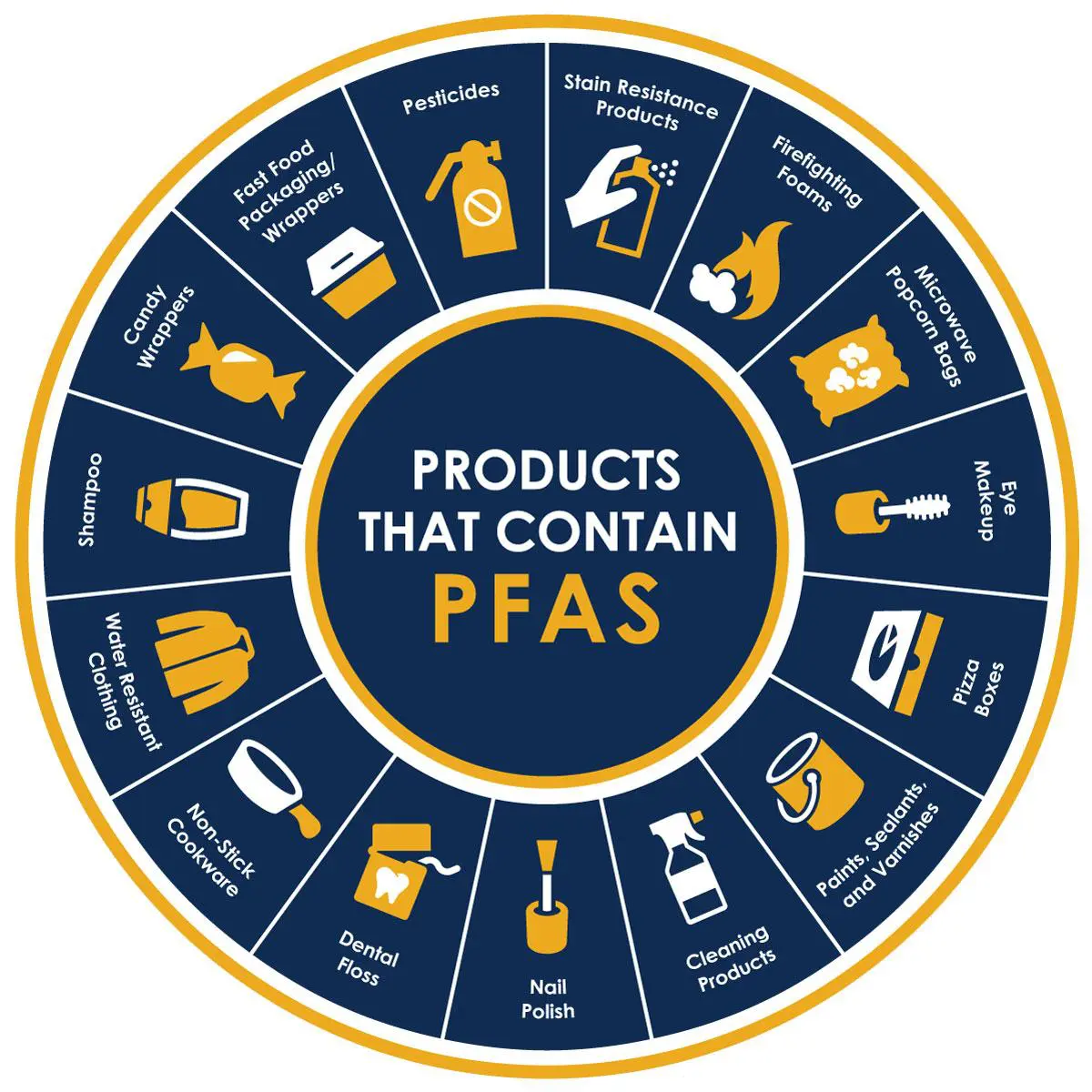PFAS Litigation Legal Challenges Update April 2025
April 7, 2025 by Susan MohrIntroduction To The PFAS Lawsuit And The Legal Challenges
Per- and polyfluoroalkyl substances, commonly known as PFAS, are a group of man-made chemicals used for decades in various industrial and consumer products due to their resistance to water, grease, and stains. Despite their widespread use, these chemicals have raised significant environmental and health concerns, as they do not easily break down and can accumulate over time in the human body and the environment.

PFAS exposure has been linked to a range of adverse health effects, including cancer, thyroid hormone disruption, and immune system impacts. As awareness of these risks increases, PFAS has become the focal point of numerous legal challenges globally. These lawsuits seek to hold manufacturers accountable for contamination and demand compensation for cleanup efforts and health damages, marking a comprehensive and ongoing legal battle against the backdrop of mounting scientific evidence on the hazards of PFAS.
Recent Regulatory Changes Affecting PFAS
In recent months leading up to April 2025, significant regulatory changes have impacted the management and litigation of PFAS, or per- and polyfluoroalkyl substances, known for their persistence in the environment and potential health risks. One of the notable changes is the introduction of more stringent federal guidelines by the Environmental Protection Agency, aiming to lower acceptable levels of PFAS in drinking water.
This regulatory tightening reflects growing concerns over the long-term effects of PFAS exposure. Additionally, several states have implemented their own, even more rigorous regulations, underscoring a fragmented regulatory landscape. These developments have prompted companies to reassess their compliance strategies and intensify remediation efforts. Moreover, recent legislative efforts have focused on improving transparency in PFAS reporting, which may increase the potential for litigation as affected communities become more aware of contamination sources and their rights to seek redress.
Key PFAS Litigation Cases In Early 2025
In early 2025, PFAS litigation continues to be a pivotal focus in environmental and public health legal battles. Several high-profile cases are steering the conversation and setting precedents for future PFAS-related lawsuits. Among these is a significant class-action lawsuit against a major chemical manufacturer accused of polluting water supplies with PFAS, also known as “forever chemicals,” due to their persistence in the environment.
The case emphasizes the demand for accountability and compensation for affected communities. Another landmark case involves a state attorney general suing multiple corporations for alleged violation of state environmental laws and seeking funds for remediation and public health initiatives. Additionally, a landmark settlement was reached involving a multinational corporation agreeing to pay substantial damages for contaminating groundwater with PFAS, highlighting the financial implications and regulatory pressure industries face regarding these persistent pollutants.
These cases underline the increasing momentum and complexity of PFAS litigation in 2025.
Settlement Trends And Their Implications
As of April 2025, settlement trends in PFAS litigation reveal a significant evolution in how these cases are resolved, reflecting broader implications for environmental law and corporate accountability. Companies facing lawsuits over PFAS contamination have increasingly opted for settlements to avoid protracted courtroom battles and the unpredictability of jury verdicts. The financial magnitude of these settlements has increased, signaling a recognition of the severe impact of PFAS on communities and the environment.
These settlements often include substantial funds directed toward clean-up efforts and long-term health monitoring, underscoring the urgency of addressing the contamination. Moreover, the growing trend of including non-monetary terms, such as commitments to reform manufacturing processes to reduce PFAS use, highlights a shift toward preventative measures. These trends suggest a promising movement towards more responsible corporate practices and heightened environmental standards.
Impact Of PFAS Litigation On Affected Industries
The ongoing PFAS litigation has significantly impacted several industries, particularly manufacturing, chemical, and consumer goods sectors. Companies within these industries have been forced to reassess their operational practices and prioritize the development of safer alternatives to per- and polyfluoroalkyl substances. Legal pressures have led to increased scrutiny on supply chains and prompted extensive research investments. Financially, the lawsuits have translated into hefty settlements and legal fees, straining resources and affecting profitability.
Insurers have responded by tightening coverage terms, further raising costs for businesses involved. Moreover, the litigation has intensified regulatory actions, resulting in stricter standards for chemical safety and environmental compliance, necessitating costly adjustments. For affected companies, rebuilding public trust remains a significant challenge amid heightened consumer awareness and demand for transparency. Overall, PFAS litigation continues to reshape industry dynamics, compelling a shift toward sustainability and compliance-driven innovation.
Future Outlook For PFAS Legal Actions And Settlements
Looking ahead, the legal landscape surrounding PFAS (per- and polyfluoroalkyl substances) is expected to become increasingly dynamic and complex. With growing public awareness and scientific evidence linking PFAS to health issues, regulatory bodies may tighten restrictions, prompting more legal claims. The increasing number of class-action lawsuits and multidistrict litigation cases suggests that corporations involved in PFAS production or contamination will face mounting financial liabilities.
As more states introduce their own stringent regulations, companies may need to allocate significant resources to compliance and legal defense. Furthermore, the potential for significant settlements and judgements could serve as a catalyst for widespread litigation, pushing corporations to seek more effective and sustainable solutions to mitigate exposure. In this evolving framework, businesses might focus on innovative technologies and collaborative strategies to address contamination, ultimately shaping a more accountable industrial landscape for PFAS management.
Click the link below, learn more about us, and book a call.
https://calendly.com/mohrmarketing
For more information about our PFAS leads campaign, contact us at te**@******tg.com.
CONTACT US FOR A QUOTE. CALL 866-695-9058 OR USE OUR REQUEST A QUOTE FORM.
Susan Mohr
Mohr Marketing, LLC
CEO and Founder


Recent Posts
- Motor Vehicle Accidents Relating To Autonomous Vehicles
- Hair Straightener Litigation Status 2025
- PFAS Litigation Legal Challenges Update April 2025
Categories
- Business Financing
- Call Verified MVA Leads
- Compliance Program
- Lead Generation For Chiropractors
- Lead Generation For Criminal Attorneys
- Lead Generation For D&A Treatment Centers
- Lead Generation For Eye Doctors
- Lead Generation For Family Law Practices
- Lead Generation For PI Law Firms
- Lead Generation For Plastic Surgeons
- Leads For Healthcare Professionals
- Leads For Insurance Industry
- Legal Leads
- Legal Updates
- Mass Tort Leads
- Medicare and Medicaid Leads
- Merchant Funding Leads
- Online Marketing Strategies
- Pre-Settlement Funding
- Signed MVA Cases
- Tort Updates
Archives
Copyright © 2024 Mohr Marketing, LLC. All Rights Reserved.


